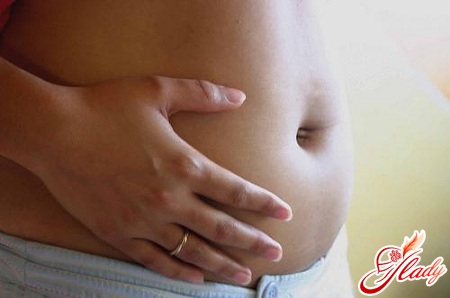 Do you remember which sacrament is considered the mostsacred on earth? That's right, it is the birth of a new life. All parents await the birth of their baby with trepidation. This is especially true for expectant mothers. And it is not surprising - after all, they take a direct part in this sacrament. Moreover, it mainly depends on the woman how healthy the child will be born. On the woman and, of course, on the doctors. Fortunately, today the qualifications of doctors and the level of modern medicine are quite high, so cases of child death are extremely rare. But, nevertheless, women are very worried before childbirth. And psychologists say that the main nature of this fear is nothing more than the lack of necessary information. And if with the birth itself everything is more or less clear - there is enough information, then with the postpartum period everything is more complicated. Women do not know what to expect in the early postpartum period. By the way, sometimes women do not even notice the complications that have begun. As a rule, this happens for two reasons. Firstly, the new mother is so excited about the birth of her baby that she has a poor perception of the surrounding reality. And secondly, a woman may not notice the problem for a very banal reason - because she simply does not know what the postpartum period should normally be like. This is what this article is about. We will tell you about how the postpartum period should normally proceed, as well as what pathologies are most often noted by doctors during this period of time. Of course, we will not go into detail about how to eliminate this or that complication - a woman does not need such information at all, since this is the direct task of doctors. However, you will learn this in general terms - such knowledge will help you avoid fear of the unknown - in this case, before the manipulations of doctors.
Do you remember which sacrament is considered the mostsacred on earth? That's right, it is the birth of a new life. All parents await the birth of their baby with trepidation. This is especially true for expectant mothers. And it is not surprising - after all, they take a direct part in this sacrament. Moreover, it mainly depends on the woman how healthy the child will be born. On the woman and, of course, on the doctors. Fortunately, today the qualifications of doctors and the level of modern medicine are quite high, so cases of child death are extremely rare. But, nevertheless, women are very worried before childbirth. And psychologists say that the main nature of this fear is nothing more than the lack of necessary information. And if with the birth itself everything is more or less clear - there is enough information, then with the postpartum period everything is more complicated. Women do not know what to expect in the early postpartum period. By the way, sometimes women do not even notice the complications that have begun. As a rule, this happens for two reasons. Firstly, the new mother is so excited about the birth of her baby that she has a poor perception of the surrounding reality. And secondly, a woman may not notice the problem for a very banal reason - because she simply does not know what the postpartum period should normally be like. This is what this article is about. We will tell you about how the postpartum period should normally proceed, as well as what pathologies are most often noted by doctors during this period of time. Of course, we will not go into detail about how to eliminate this or that complication - a woman does not need such information at all, since this is the direct task of doctors. However, you will learn this in general terms - such knowledge will help you avoid fear of the unknown - in this case, before the manipulations of doctors.
Features of the course of the postpartum period
So, the baby was born.But the woman is still in labor - until the placenta separates and comes out. After that, the immediate postpartum period begins. And doctors call the woman a woman in labor. The postpartum period itself is divided into two stages:
- Early postpartum period
This period is the shortest – only two hours.after the birth of the placenta. This stage is the most important – it determines the entire further course of the recovery period after childbirth. At this time, the young mother should be under the strict supervision of doctors, midwives and nurses. We will tell you a little later about what happens in the woman’s body during this period.
- Late postpartum period
It starts two hours after birth.placenta and lasts 40 days. As a rule, women relax and believe that their health is no longer in danger. However, this is not true - until the uterus shrinks to its original size, there is always a certain risk of developing various complications. In particular, postpartum endometritis.
The condition of a woman in the early postpartum period
So let's talk about whathappens to a woman's body in the early postpartum period. The walls of the uterus begin to contract very actively, as a result of which in just a couple of hours the uterus decreases in size several times. Its walls begin to thicken, and the body of the uterus itself becomes spherical. In just a couple of hours, the back and front walls of the uterus are already tightly pressed against each other. The cervix also has a very peculiar appearance - it resembles a sac, wrinkled and with very thin walls. The doctor can easily insert a hand into the uterine cavity - and the woman will not feel any particular discomfort due to the stretching of the cervix. The weight of the uterus immediately after childbirth is approximately 1000 grams. During childbirth, the fixing apparatus, like the ligaments of the uterus, is very stretched. And because of this, the uterus is very mobile and easily shifts. By the way, this phenomenon is largely facilitated by the condition of the pelvic floor muscles. This is why it is so important to empty the bladder in a timely manner. Otherwise, an overfilled bladder will lead to constant displacement of the uterus. And therefore, to a deterioration in its ability to contract. Such a phenomenon is fraught with the development of a variety of complications. Among women who have never given birth, there is an opinion that immediately after giving birth, the mother falls asleep. However, this is not true. Of course, the woman is very tired, since her body has done very hard work. However, nature is smarter than us - a woman produces a huge amount of tonic substances. And the emotional shock makes itself felt. Therefore, the first few hours after giving birth, women are clearly not up to sleep. But this is only if the woman is healthy. In the same case, if the woman has drowsiness, or, even worse, vomiting joins drowsiness, the doctor has every reason to suspect the presence of hypoxia of the brain. And this pathology, in turn, most often indicates extensive blood loss. Moreover, it is often internal, so it is almost impossible to guess about it by external signs. The changes do not bypass the functioning of the cardiovascular system. And this is not surprising - as soon as the baby is born, a whole series of changes occur in the woman's body:
- Elimination of the utero-placental additional circle of blood circulation.
- Decrease in intra-abdominal pressure.
- Sharp changes in the hormonal background in the body of a young mother.
All this leads to the fact that a womanAlmost immediately after childbirth, the pulse rate slows down significantly, and the blood pressure level changes. Moreover, in most cases, it decreases significantly. Although there are exceptions - cases in which blood pressure, on the contrary, increases. As a rule, this is typical for those women who regularly faced hypertension both before and during pregnancy. Such women need to monitor their condition especially carefully. Body temperature in most cases remains normal. But sometimes it can rise to 37.5 - 38 degrees for a short time. This hyperthermia is a consequence of stress - both physical and emotional. As a rule, doctors are not particularly worried about such temperature increases. Of course, if they last no more than an hour - otherwise it is necessary to sound the alarm, since most often a long-term increase in temperature indicates the development of some inflammatory process.
Bleeding in the early postpartum period
One of the most serious complications in earlypostpartum period is bleeding. If it occurs in the first two hours after birth, it is called early postpartum bleeding. There are several reasons that lead to the development of bleeding:
- Hypotension and atony of the uterus
Doctors use this term to describe this condition,при котором происходит сильное снижение нормального тонуса матки. Как следствие, стенки матки сокращаются гораздо хуже, чем положено, да и возбудимость также в значительной степени снижается. Полной потери этих способностей не происходит – матка по-прежнему продолжает реагировать на введение медикаментов, механические и физические раздражители. Хотя та сила, с которой должна реагировать матка на эти раздражители, при гипотонии намного слабее, чем в остальных случаях. Более того: у некоторых женщин врачи отмечают своеобразный парадокс – чем сильнее действие раздражителя, тем слабее отклик матки. В особо же тяжелых случаях может иметь место критическая степень гипотонии матки – атония. При атонии происходит полная утрата тонуса матки, способности к сокращению. Причем в этом случае отклик матки не вызывают даже самые сильные раздражители и медикаменты. Проще говоря, матка находится в состоянии так называемого паралича. К счастью, подобное явление наблюдается крайне редко. Но именно оно может стать причиной смертельного исхода. В том случае, если причиной, по которой кровотечение возникло в раннем послеродовом периоде, стала именно гипотония матки, оно редко бывает слишком интенсивным и стабильным. Разумеется, в том случае, если речь идет не об атонии – при ней кровотечение очень обильное и интенсивное, остановить его крайне тяжело. При гипотонии же кровь выделяется понемногу, малыми порциями. Как правило, чаще всего в крови содержатся кровяные сгустки. Особенно часто это наблюдается при неполном отделении последа. Кроме того, причиной гипотонии матки может стать слишком сильное ее перерастяжение. Например, в том случае, если родилась двойня, либо если малыш появился на свет очень крупным. Кроме того, подобная патология может возникнуть в результате затяжных родов, длящихся больше 24 часов. Хотя справедливости ради следует отметить, что врачи прекрасно знают об этой особенности и заранее предпринимают все необходимые меры профилактики кровотечения. Кроме того, причиной гипотонии матки может стать длительное и систематическое применение препаратов, снижающих тонус матки. Как правило, эти препараты назначаются для сохранения беременности при повышенном тонусе матки. Не менее опасна и преждевременная отслойка плаценты. Мало того, что она может привести к гипоксии и даже гибели малыша, она также провоцирует развитие гипотонии, а порой и атонии матки. И, как следствие, кровотечение, развившееся в послеродовом периоде. Да и риск столкнуться с таким Причем данный тип кровотечения весьма своеобразен – весьма значительная часть крови скапливается как в полости самой матки, так и во влагалище. Именно поэтому в некоторых случаях подобное кровотечение обнаруживается не сразу. Однако не стоит особо беспокоиться по этому поводу – врач-гинеколог очень часто осматривает женщину в раннем послеродовом периоде. И он обязательно заметит неизбежное увеличение матки в размерах, которое происходит из-за скапливания в ней крови. Да и кровь рано или поздно начнет выделяться наружу. Как правило, из-за того, что сокращение матки довольно слабое, она не в состоянии избавиться от находящихся в его полости сгустков крови. Однако очень часто врачи быстро устраняют их путем простого, но очень осторожного надавливания на само тело матки. После этого женщине внутривенно вводятся специальные медикаменты. В некоторых случаях может понадобиться ручное исследование матки – во время него врач вводит кисть руки в полость матки и вручную устраняет остатки плаценты и сгустки крови. Пугаться этого не стоит – само собой разумеется, что эта манипуляция проводится исключительно под общим наркозом. В большинстве случаев этих мер оказывается достаточно для устранения проблемы.
- Violation of blood clotting
In some cases, the cause of postpartumbleeding is nothing more than a systemic disease, as a result of which blood clotting worsens. Although these days, as a rule, this happens extremely rarely. After all, women undergo a thorough examination during pregnancy. And all diseases are detected in advance. This means that doctors already know exactly what to expect and prepare in advance. Therefore, it is very important to visit a doctor in a timely manner during pregnancy.
- Ruptures of the uterus and its cervix
Sometimes heavy bleeding occurs in thatif the uterus ruptures during childbirth. Or in the case of severe damage to the cervix. Such cases are diagnosed by doctors in the first minutes after childbirth, emergency measures are taken to eliminate the damage. As a rule, simple suturing of ruptures is enough. But in some cases, to save the woman's life, it may be necessary to remove the uterus. The risk group includes women carrying twins, a very large baby. And, of course, those mothers who already have a child born by cesarean section. Especially if the interval between births is less than three years.
Types of bleeding that occurred in the early postpartum period
Of course, any bleeding is a pathology. However, bleeding is not all the same. Doctors distinguish two main types:
- Profuse bleeding
In this case, the bleeding is very heavy,massive. It usually begins suddenly, and the blood loss is extremely large. The body of the uterus is very flabby, having lost the ability to contract normally. The uterus does not respond properly to stimuli - manual massage, external, the introduction of various medications designed to contract the walls of the uterus. Hemorrhagic shock develops very quickly - a condition that poses a serious threat to the life of a woman.
- Wavy bleeding
This bleeding is radically different fromthe previous type. In this situation, the relaxation of the uterus is not constant, but periodic. Therefore, the blood flows out in equal portions, approximately 200 ml. In this case, the uterus adequately responds to external stimuli and the introduction of medications - it begins to contract. This condition is less dangerous for the life and health of a woman. And doctors cope with it much faster. But this is only if the problem is noticed in a timely manner. Otherwise, the compensatory capabilities of the body of the new mother are sooner or later depleted: bleeding increases significantly, hemorrhagic syndrome develops. Fortunately, if a woman gives birth in a maternity hospital, this cannot happen, since doctors very carefully monitor her.
Treatment of bleeding in the early postpartum period
We sincerely wish you that all the information,which you just learned, has never been useful to you in practice. But, unfortunately, sometimes something like this does happen. And if a woman knows what to expect, she will be calmer. So, the methods for stopping bleeding in the early postpartum period are divided into:
- Mechanical
In this case, doctors stimulate the uterus by directly influencing it. Such an influence is usually a uterine massage - both external and direct.
- Medicamentous
There are a number of pharmacologicaldrugs that most effectively stimulate uterine contractions. If necessary, the doctor will select the most suitable drug for each specific case.
- Operational
In the event that other methods prove to beineffective, doctors are forced to resort to surgical methods. These include manual examination of the uterus, two-handed massage, and in particularly severe cases, removal of the uterus. As a rule, most often the treatment is complex. The first thing doctors do is empty the bladder using a catheter. After that, through the abdominal wall, they begin an external massage of the uterus. At the same time, the woman is given intravenous medications - most often oxytocin. If necessary, if the bleeding is too heavy, or if the woman is exhausted, an intravenous infusion of glucose solution can be prescribed, which will provide the woman with much-needed support. In the event that this measure is ineffective, anesthesiologists enter the "game". The mother is given intravenous anesthesia, after which the gynecologist enters the uterine cavity with his hand and begins its examination. The doctor must make sure that there are no pieces of the placenta left in the uterus, and that the integrity of the uterus and its cervix is not damaged. At the same time, a very powerful massage of the uterus is performed. These manipulations are most effective in the early stages of bleeding. In addition, the introduction of prostaglandins into the cervix is very effective - even very heavy bleeding stops. Of course, all these manipulations should be accompanied by supportive therapy - the blood volume should not fall below the critical mark. Therefore, if necessary, the woman may be prescribed an infusion of saline solutions, and sometimes a blood transfusion. In especially severe cases, when all other measures are useless, doctors may ligate the uterine vessels. If these measures are not effective enough, doctors may decide to remove the uterus. In medicine, this operation is called extirpation of the uterus. Of course, doctors resort to this measure in the most extreme case, when the woman's life is under real threat and there are simply no other ways to help her.
Bleeding in the Late Postpartum Period
All the bleeding that occurs later,bleeding in the late postpartum period. This type of bleeding is much less common than in the early postpartum period. However, it does occur, so it should not be overlooked. The causes of this bleeding are similar to those that provoke complications in the early postpartum period. This includes incomplete detachment of the placenta, various blood diseases, and serious birth injuries. In addition, hypotonic bleeding may also develop in the late postpartum period - as a rule, it occurs within the first day after childbirth, no later. Treatment in this case is prescribed based on the causes of the bleeding. The first thing the doctor will do is carefully examine the woman. If the cause of the bleeding is a delay in the placenta, the size of the uterus is larger than it should be. The uterus itself has an extremely soft consistency, and its cervix easily passes two fingers. To clarify the diagnosis, an ultrasound examination is performed in most cases. However, the doctor can immediately conduct a manual examination of the uterus. And, if necessary, remove the remaining parts of the placenta. The woman will be prescribed hemostatic drugs, drugs that stimulate its contraction. In addition, powerful antibacterial therapy will be prescribed without fail, which is necessary to exclude the possibility of a secondary infection and, as a result, the development of an inflammatory process. In fact, this is how endometritis most often develops. In the same case, if the cause of bleeding that began in the late postpartum period is trauma to the birth canal, most likely, the technique of suturing was violated. In most cases, this leads to the formation of extensive hematomas in the vagina. In this case, the woman will be given intravenous anesthesia, after which the doctor will remove the old stitches, clamp the bleeding vessels, connect the edges of the wound and re-sew them. For the woman, this procedure is completely painless, because she is under anesthesia at the time of manipulation. As you can see, there is something to be afraid of in the postpartum period. However, do not forget - forewarned is forearmed. And all kinds of bleeding in the postpartum period are quite rare. Therefore, do not wind yourself up and remember that all this information is provided for informational purposes only. The chances that you will fall into the risk group are quite small. Easy birth to you! We advise you to read:









